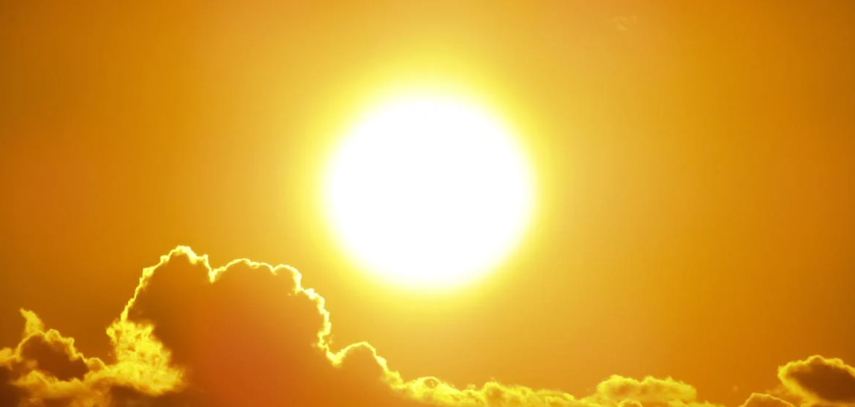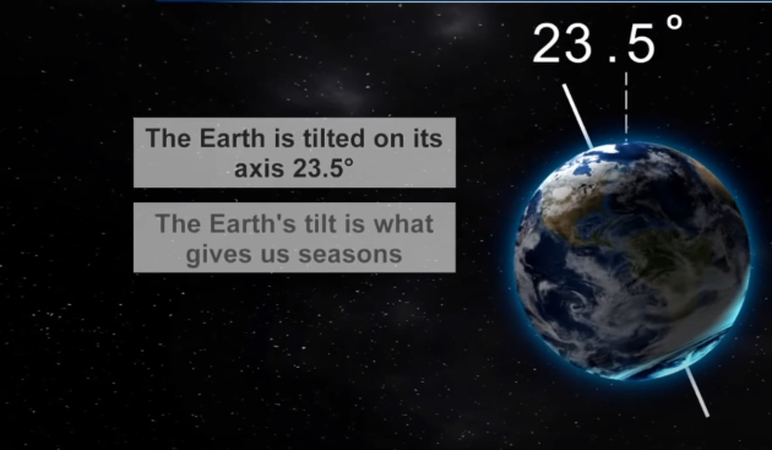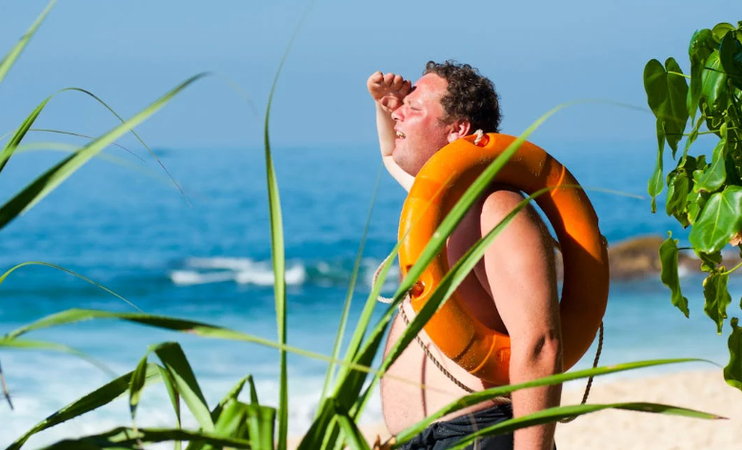First Day of Summer 2025, When the Sun Hits Its Highest Point
The first day of summer 2025 arrives with longer daylight hours and warm energy that signals the year's brightest season, if it's not too cloudy out there for you to witness it. Many people in different cultures celebrate this day with different outdoor activities and go to festivals so that they have a chance to enjoy nature. It marks the summer solstice. This article explains the exact date for 2025, what the summer solstice means, how much daylight major cities in the US get on this day, and other related information.
Part 1. What Is the First Day of Summer In 2025?
The first day of summer 2025 falls on Friday, June 20. This day officially signals the start of the summer season in the Northern Hemisphere. Temperatures often rise in the weeks following this day as the season shifts fully into summer.

In many cultures, the first day of summer has traditional meanings. It represents growth, warmth, and renewal. People use this date to mark the change in seasons, adjust farming activities, or celebrate with festivals that honor nature's bounty. Schools and workplaces often plan summer breaks or vacations around this time, making it a point of transition in people's routines.
Since this day shifts slightly based on Earth's orbit and calendar alignment, in some years, the first day of the summer season falls on June 21 or June 22. But in 2025, June 20 is the day the sun's position officially starts the summer months, changing the weather and daylight in many parts of the world. The extended daylight means more time to enjoy the outdoors.
Part 2. What Is the Summer Solstice?
The summer solstice, an astronomical event, happens once a year. It occurs because Earth spins on a tilted axis. This tilt means that during a specific time of the year, the Northern Hemisphere leans closer to the sun. On the day of the solstice, the sun is at its highest in the sky, more than on any other day, and this causes the longest day of the year.

Let's talk about some technical stuff to explain this better.
Earth's axis is tilted about 23.5 degrees. As our sweet Earth moves around the sun, different parts get different amounts of sunlight. At this time, the Northern Hemisphere is tilted most towards the sun, and the summer solstice takes place.

While the Northern Hemisphere enjoys its longest day, the Southern Hemisphere has its shortest day. That side of the planet is tilted away from the sun during this time, which marks the start of winter there.
Part 3. How Much Daylight Do Major U.S. Cities Get on the First Day of Summer 2025
Daylight hours on June 20, 2025, vary based on how far north a city is. Cities farther north see more hours of sunlight.
Here's a list of 18 major U.S. cities and their approximate daylight hours on this day:
- Seattle, Washington: 16 hours 12 minutes
- Portland, Oregon: 16 hours 9 minutes
- Minneapolis, Minnesota: 15 hours 45 minutes
- Chicago, Illinois: 15 hours 20 minutes
- Boston, Massachusetts: 15 hours 12 minutes
- New York City, New York: 15 hours 24 minutes
- Denver, Colorado: 14 hours 55 minutes
- Atlanta, Georgia: 14 hours 30 minutes
- Dallas, Texas: 14 hours 20 minutes
- Miami, Florida: 13 hours 45 minutes
- Los Angeles, California: 14 hours 25 minutes
- San Francisco, California: 14 hours 48 minutes
- Washington, D.C.: 15 hours 2 minutes
- Detroit, Michigan: 15 hours 10 minutes
- Philadelphia, Pennsylvania: 15 hours 8 minutes
- Anchorage, Alaska: Nearly 19 hours
- Honolulu, Hawaii: 13 hours 20 minutes
- Salt Lake City, Utah: 14 hours 48 minutes
US cities farther north, like Anchorage, Alaska, have nearly 19 hours of daylight. Southern cities like Miami and Honolulu have fewer daylight hours but still much more than in winter.
Because Earth tilts on its axis, places closer to the poles see longer days in summer. The sun stays above the horizon longer and follows a broader path. This explains why cities like Seattle, Portland, Minneapolis, and Anchorage enjoy sunlight hours closer to 16 hours than other cities.
Part 4. How Do People Celebrate the First Day of Summer?
Many people take advantage of the longest day of the year to celebrate summer's arrival. There are a variety of ways they honor this special day:
Outdoor festivals are common in many communities. These festivals might include live music, food trucks, arts and crafts, and other activities that go on into the evening. Because the sun stays out so long, these festivals can last late without losing daylight.
Bonfires are another popular tradition. Lighting a fire symbolizes the sun's power and the warmth of the season. People gather around bonfires for storytelling, singing, or just enjoying the night sky after a long day of light.
Hiking and nature walks have also become popular. People use the extra daylight to explore parks, trails, or beaches because longer days give more opportunities to enjoy natural spaces without rushing.

Gardening picks up at this time as well. Plants benefit from longer sunlight and warmer temperatures, so this is a key moment for planting, tending, or harvesting gardens and crops.
Some people also practice yoga or meditation at sunrise or sunset to honor the sun's role in the natural world.
Finally, ancient sites like Stonehenge attract crowds who gather to watch the sunrise align perfectly with the stones on the solstice. This tradition dates back thousands of years.
Part 5. Does the First Day of Summer 2025 Affect Weather?
Even though the summer solstice marks the official start of summer, it doesn't cause an instant change in the weather for most places. The weather depends on many things, like geography, air pressure, ocean currents, and local climate patterns. Just because the sun is highest in the sky on June 20 doesn't mean the temperatures rise immediately.

In fact, many places experience what's called seasonal lag. This means that the hottest days usually fall several weeks after the solstice, often in July or August. So, even though June 20 is the longest day, the weather often warms gradually for some time afterward.
This delay occurs because land and water absorb heat slowly. Water especially warms at a slower pace, which influences temperatures in nearby areas. The sun's energy accumulates over time, and temperatures continue rising even after the solstice passes.
Because of this, you might notice that the hottest weather arrives later in summer, not right at the start. So, the first day of summer is more of a calendar signal than a direct weather change.
Part 6. What Are the Differences Between Astronomical and Meteorological Summer?
The first day of summer discussed here follows the astronomical calendar. This calendar uses Earth's exact position in relation to the sun to mark seasons. It is based on events like the summer solstice, which happens when the sun reaches its highest point in the sky. This moment officially starts astronomical summer. The dates can be different for each year but usually fall around June 20 to June 22.
On the other hand, meteorological summer is a bit different. Meteorologists divide the year into seasons based on calendar months and average temperature patterns. According to this system, summer begins on June 1 and ends on August 31 every year. This makes meteorological seasons easier to track because the months stay the same. It matches up better with weather data and helps scientists compare temperatures, rainfall, and other climate factors across different years.
Meteorologists like this system because it avoids the shifting dates of astronomical events. By sticking to full months, they can organize information consistently. For example, if a meteorologist says "summer temperatures," everyone knows they mean June, July, and August without confusion. This is why it is easy for you to understand weather reports and climate studies.
So, while astronomical summer depends on the sun's position and natural events, meteorological summer is based on calendar months and temperature trends. Both ways have their uses, but they don't always start or end on the same day. Knowing the difference helps explain why some people might say summer starts on June 1 while others say it starts between June 20 and June 22.
Part 7. What Historical Significance Does the First Day of Summer Have?
The first day of summer, also known as the summer solstice, has significant historical importance as a marker of the longest day of the year and a time for various celebrations and rituals across different cultures. It has been observed since ancient times, with connections to agriculture, marking the start of the year and even influencing the timing of major events like the Olympic Games.
Here's a breakdown of the historical significance:
- Ancient Calendar and Agriculture: The solstice served as a crucial marker in ancient calendars, particularly in the Neolithic era, helping civilizations track seasons and plan agricultural activities like planting and harvesting.
- Predicting Natural Events: In Ancient Egypt, the summer solstice mostly occurred at the same time as the yearly flooding of the Nile River. People used this event to predict the flood, which was very important for their farming and survival.
- Celebrating Fertility and Abundance: Many cultures associated the summer solstice with the earth's fertility, celebrating the time of abundance and growth that the longest day of the year represented.
- Religious and Spiritual Practices: The solstice has been intertwined with religious and spiritual beliefs and practices in many cultures. For instance, Pagans celebrated Midsummer with bonfires, believing they could enhance the sun's energy and ensure a good harvest. Ancient Greeks held the Kronia festival in honor of the agricultural god Cronus, where social codes were temporarily relaxed, and enslaved people were allowed to participate. Some Christian churches recognize it as St. John's Day back in the day, commemorating John the Baptist's birth.
- Start of the Year: Ancient civilizations like the Egyptians and Greeks associated the solstice with the beginning of their new year, with the Egyptians marking the Nile's flood and the Greeks counting down to the Olympics.
- Association with Magic and Mysticism: In some folklore, the summer solstice was believed to be a time when the veil between worlds thinned, making it a potent time for magic and when spirits and fairies were thought to be more active.
- Alignment with Monuments: Ancient structures like Stonehenge and the Great Pyramids are believed to be positioned with the sunrise or sunset on the solstice. This shows how important the solstice was when they were built and what they were used for.
- Midsummer Traditions: In many European cultures, the time around the summer solstice is referred to as Midsummer and is associated with festivals, bonfires, and various customs.
Part 8. FAQs of the First Day of Summer 2025
Q1. How Does the Solstice Affect Daylight?
A1. On the solstice, daylight hours reach their peak. The sun rises very early and sets later than on any other day. This means many people experience the longest time with sunlight. The sun moves in a wider arc across the sky. That creates longer evenings and mornings with sunlight.
Q2. Are we going to have a hot summer in 2025?
A2. The latest forecast from NOAA predicts hotter-than-average temperatures for much of the U.S. this summer. The East Coast, southern Plains, and West may see extreme heat. June could feel more normal in some areas, but July and August are expected to be warmer, pushing the season above average overall.
Q3. Is June 21 always the first day of summer?
A3. June 21 is often the first day of summer, but it doesn't always fall on this date. The summer solstice can shift between 20 and 22nd June, depending on the year and time zone differences. In 2025, the first and longest day of summer is actually Friday, June 20.
Conclusion on the First Day of Summer 2025
So, the first day of summer 2025 falls on June 20, which marks the longest day and shortest night in the Northern Hemisphere. This summer solstice event happens when the sun reaches its highest point, resulting in extra daylight. Major U.S. cities get different amounts of sunlight depending on their location, with northern cities seeing longer days. This day has been important for thousands of years, and you can celebrate it too by engaging in different fun activities.










 HitPaw Univd (Video Converter)
HitPaw Univd (Video Converter) HitPaw VoicePea
HitPaw VoicePea  HitPaw VikPea (Video Enhancer)
HitPaw VikPea (Video Enhancer)


Share this article:
Select the product rating:
Daniel Walker
Editor-in-Chief
This post was written by Editor Daniel Walker whose passion lies in bridging the gap between cutting-edge technology and everyday creativity. The content he created inspires the audience to embrace digital tools confidently.
View all ArticlesLeave a Comment
Create your review for HitPaw articles